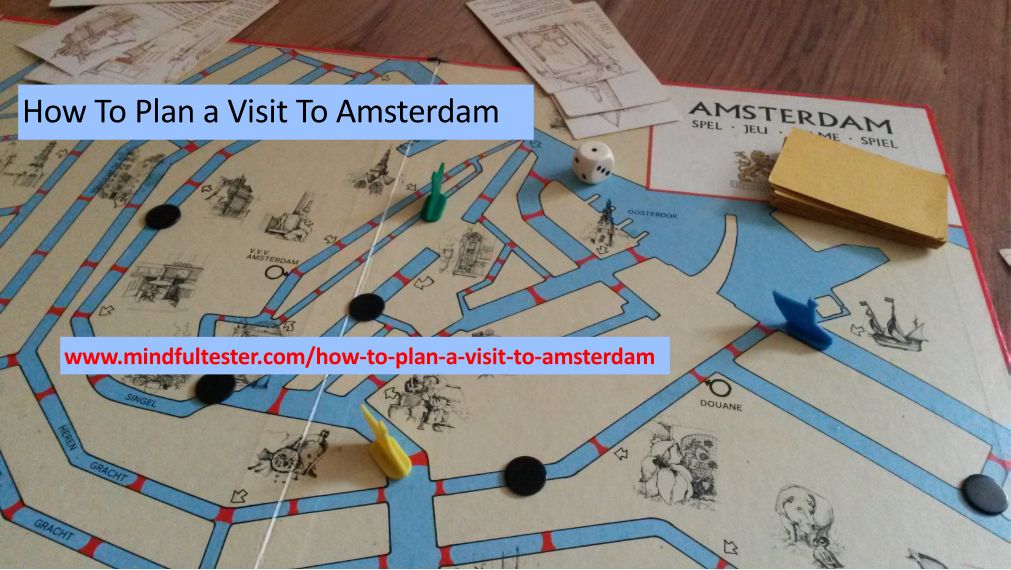Board games are a great way to pass time with children. One of my favourites is Amsterdam. In this game you win, if you are the first one, who have visited 6 random chosen touristic places in the Dutch capital.
Planning as usual
At the beginning of the game my children and I had each 6 cards with touristic places to visit in Amsterdam. So I told them to find the places on the map. Then they had to plan their visit using the canals with a boat. This was more difficult. With some help from me they planned a boat ride by making a stack of 6 cards.
Replanning as usual
In the next step each player placed two bridge blocks, which can be compared with road blocks for cars. Six bridge blocks had a great impact on the planned tours. The ideal routes were blocked or even worse, touristic places were blocked. So the whole process of stacking cards began again. My children did not complain.
Planning in progress
During the game the bridge blocks can be moved by players. So carefully crafted routes became obsolete. This time I was smart: I adviced my kids to plan a route within a small area of their boats.
Heuristic as a planning
After visiting a touristic place the player gets a yellow card. This can be a nice event like moving bridge blocks or distressing one like going to a boat of another player. My planning advice changed to: go to the touristic place, which can be reached by passing a minimum of bridges.
Planning as a service
So long planning saves time and reduces frustration, it is fine with me.
